
Content
- IAF’s Unending Fighter Conundrum
- Why a Progressive Indian Policy on Myanmar is More Than Plausible
- Pollution Control Boards Have Power to Impose Restitutionary Damages: SC
- Largest Asian Tortoise Back in Nagaland Community Reserve
- Old Trees, Ageing Farmers Worsen Outlook for Palm Oil Exporters
- Attempt to Save Rhinos by Giving Them Radioactive Horns
IAF’s unending fighter conundrum
Historical Significance of MiG-21 in India’s Defence History
- Induction & Origins: Inducted post-1962 Sino-Indian War from the Soviet Union; first supersonic and non-Western jet in the IAF.
- Combat Legacy:
- Pivotal in 1965 and 1971 wars, Kargil 1999, and 2019 Balakot-Aerial Conflict (notably, Wing Commander Abhinandan’s engagement).
- Trainer Role:
- Used for Stage-III pilot training in absence of an AJT, despite being “sub-optimal.”
- Global Footprint:
- One of the world’s most prolific jets: 6,000+ MiG-21s across 35+ countries.
Relevance : GS 3(Internal Security , Defence)
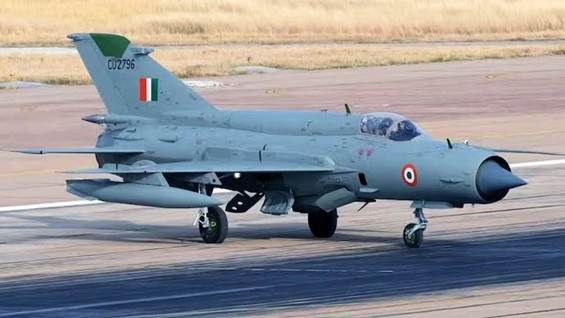
Operational and Safety Concerns
- Accident-Prone: Over 450 accidents, earning the MiG-21 the nickname “Flying Coffin.”
- Aging Fleet:
- Only two squadrons (No. 23 ‘Panthers’ and No. 3 ‘Cobras’) remain, set to retire.
- Legacy Phasing Out:
- With MiG-21 retirement, MiG-29 and Su-30MKI are the only Russian-origin jets remaining.
Current IAF Inventory & Transition Challenges
- Aging Assets:
- Early variants of Jaguars, Mirage-2000s, MiG-29s will retire by end of the decade.
- Dependence on Limited Platforms:
- Su-30MKI (~260 in service) and LCA Tejas variants to form the backbone.
- Capability Gaps:
- IAF needs to induct 35–40 jets annually to maintain squadron strength.
LCA Mk1A: Cornerstone of the Modernisation Plan
- Contract Details:
- ₹48,000 crore contract with HAL for 83 LCA Mk1A jets (signed in 2021).
- Delivery Schedule: 16 jets/year from March 2024 — no deliveries yet.
- Causes of Delay:
- Engine delivery delay by GE Aerospace (F-404 engines ordered in 2021).
- First engine arrived only in April 2025, second in August 2025.
- HAL Response:
- Promised to scale up production to 24 jets/year.
- A follow-on order for 97 more jets worth₹67,000 crore in the pipeline.
Sukhoi-30MKI: Backbone but Needing Upgrades
- Induction: 272 Sukhois procured from Russia; ~260 remain operational.
- Recent Contracts:
- ₹13,500 crore deal for 12 new Sukhois (to replace crash losses).
- Upgrade Plans:
- HAL will modernize 84 jets in Phase 1; earlier batches to retire by 2040s.
Roadmap for the Future: IAF’s 600+ Jet Induction Plan
- Ambitious Target: Over 600 new fighters in next 20 years:
- 180 LCA Mk1A
- 120+ LCA Mk2
- 114 Medium Role Fighter Aircraft (MRFA)
- 120 Advanced Medium Combat Aircraft (AMCA)
- Twin Engine Deck-Based Fighter (TEDBF) for Navy
LCA Mk2 & AMCA: Strategic Capabilities in Pipeline
- LCA Mk2:
- Designed to replace Mirage-2000, MiG-29, Jaguars.
- First flight expected in 2026.
- AMCA (5th Generation):
- Two-phase plan:
- Mk1 with GE-414 engines
- Mk2 with 110kN engine (to be co-developed with foreign partner).
- Private sector participation invited; HAL must compete for contract.
- Timeline: 10 years to first prototype flight (expected post-2025 contract finalization).
- Two-phase plan:
Medium Role Fighter Aircraft (MRFA): The Lingering Question
- Status:
- RFI issued in 2019, but no forward movement due to cost, priorities, and delays in other projects.
- Current Prospects:
- Interim import of 5th gen fighters being explored (SU-57 or F-35).
- Sensitive negotiations underway; decision pending official stages (AoN, RFP).
Engine Technology: A Core Bottleneck
- F414 for LCA Mk2: Licence manufacture by HAL — negotiations with GE ongoing.
- AMCA Engine:
- Mk1: GE414
- Mk2: Jointly developed 110kN-class engine — foreign collaboration under discussion.
Strategic and Defence Policy Implications for India
- Indigenisation Push:
- LCA, AMCA, TEDBF, and engine co-development critical to India’s strategic autonomy.
- Industrial Ecosystem:
- HAL and private firms must deliver on time, quality, and scale.
- Geopolitical Balance:
- Fifth-gen fighters crucial for parity with China (J-20) and Pakistan’s F-16s.
- Budgetary Realism:
- Competing demands (Army modernization, Navy submarines) necessitate prioritization and execution discipline.
Critical Evaluation
- Strengths:
- Holistic roadmap to revive squadron strength.
- Serious push towards self-reliance (Atmanirbhar Bharat in defence).
- Embedded long-term vision via LCA → LCA Mk2 → AMCA.
- Concerns:
- Delays in execution risk capability gaps.
- Dependence on foreign engines and tech remains.
- Potential bureaucratic inertia and vendor inefficiencies.
- Ethical Considerations:
- Is heavy capital spending on air power justified amid socio-economic priorities?
- Can India achieve a balance between deterrence and diplomacy?
Conclusion: India’s Jet Power in Transition
India is at a critical juncture in redefining its airpower: phasing out legacy fighters like the MiG-21, embracing homegrown innovation (LCA, AMCA), and cautiously exploring high-stakes fifth-gen acquisitions. Timely execution, inter-agency coordination, and global strategic alignments will determine whether India can meet its aerial defence needs in the 21st century battlespace.
Why a progressive Indian policy on Myanmar is more than plausible
Context & Background
- Myanmar junta ended emergency rule in June 2024 and announced elections for December, amid an ongoing civil war.
- The 2021 military coup dismantled the elected civilian government, triggering:
- 5,000+ civilian deaths.
- 2.5 million+ internally displaced persons (IDPs).
- India’s current approach: Continued engagement with the junta while ignoring the pro-democracy resistance.
Relevance : GS 2(International Relations)
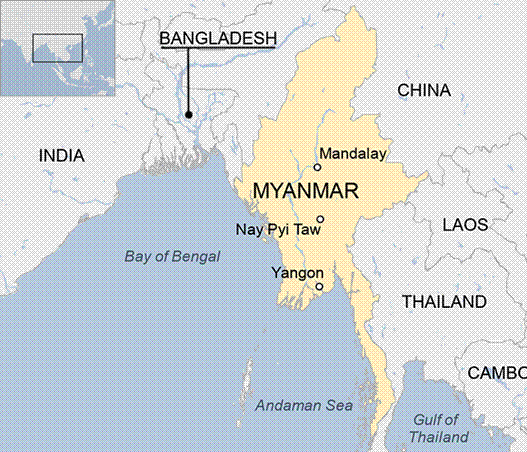
India’s Current Posture: Flawed Assumptions
- Realpolitik Argument: India must protect its “interests” (security, connectivity, China containment) by engaging with whoever is in power — even the junta.
- Problem: Assumes that values (democracy, human rights) are separate from interests.
- Key Critique: India’s definition of “interests” is narrow, strategic, and short-sighted.
The Civil War Landscape in Myanmar
- Resistance Forces: Led by the National Unity Government (NUG) — an alliance of:
- Pro-democracy activists.
- Ethnic armed groups.
- Civil society and trade unions.
- Their goal: Overthrow the 2008 military-drafted Constitution and establish a federal democratic union.
India’s China Problem in Myanmar
- China’s Approach: Arms sales, strategic infrastructure (e.g. Kyaukphyu port), backchannel diplomacy.
- India’s Missed Opportunity: While both can sell weapons, only India can offer democratic federalism as a model — an edge China lacks.
- By staying neutral or silent, India risks:
- Losing goodwill among Myanmar’s future leadership.
- Ceding long-term influence to China.
A Progressive Indian Myanmar Policy: Why It’s Plausible & Necessary
Two Core Pivots:
- Democracy
- Human Security
Policy Recommendations (4 Interlocking Steps)
Support Myanmar’s Pro-Democracy Forces
- How?
- Engage with NUG and ethnic political entities.
- Launch capacity-building programs: Constitution-making, federalism, decentralization.
- Use India’s democratic experience as soft power leverage.
- Why?
- Builds long-term strategic alliances.
- Signals India’s moral and political leadership in Asia.
Immediately Halt All Weapon Sales to the Junta
- Facts & Findings:
- Indian PSUs have reportedly sold navigation equipment and diesel to the Myanmar military post-coup (Justice For Myanmar; Frontier Myanmar).
- Why Stop?
- Junta is using all three military branches (army, navy, air force) to attack civilians.
- Weapons, even non-lethal, contribute to junta’s war infrastructure.
- Ethical Cost: Contradicts India’s global image as a democratic “Vishwabandhu”.
Open Cross-Border Humanitarian Corridors
- Conflict Zones near India:
- Sagaing Region, Chin State, and Rakhine State – key hubs of displacement.
- Action Steps:
- Reinstate Free Movement Regime (FMR), revoked in Feb 2024.
- Partner with local NGOs and global humanitarian networks.
- Deliver aid through Mizoram – which has local asylum infrastructure.
- Learn from Thailand’s cross-border aid model.
- Safeguards:
- Aid delivery must bypass the junta.
- Use pre-vetting and strict border checks to avoid contraband leaks.
Stop Deporting Myanmar Asylum Seekers
- Current Reality:
- 115 asylum seekers deported from Manipur (latest: June 2024).
- 27 Chin refugees detained in Assam
- Legal & Ethical Obligations:
- India has not ratified the 1951 Refugee Convention, but must abide by customary international law.
- Non-refoulement principle prohibits returning refugees to danger.
- Indian Constitution & human rights norms support humane refugee treatment.
Broader Strategic and Ethical Insights
India’s Core Strengths in Myanmar
- Democracy: Unique appeal to pro-democracy forces, unlike China.
- Federalism: A real-time model for Myanmar’s future constitution-making.
- People-to-People Ties: Especially in the Northeast (ethnic overlaps with Chin, Mizo populations).
- Regional Power Status: Enables India to shape the narrative of peace and reconstruction.
Risks of Current Policy
- Loss of moral legitimacy.
- Alienation of future Myanmar leaders.
- Strengthening China’s grip on Myanmar’s military-industrial complex.
- Increased instability on India’s Northeast border (influx of refugees, militancy).
Conclusion: Walking the Talk of “Vishwabandhu”
- India often claims to stand with the people of Myanmar.
- Now is the time to back that rhetoric with action — through a balanced approach that:
- Supports democratic transition,
- Respects humanitarian needs,
- Secures India’s strategic interests, and
- Elevates India’s regional leadership.
Pollution Control Boards have power to impose restitutionary damages: SC
Context of the Case
- Petitioner: Delhi Pollution Control Committee (DPCC)
- Issue: Delhi HC had ruled that DPCC cannot impose compensatory damages under Section 33A (Water Act) and Section 31A (Air Act).
- Appeal: Filed before the Supreme Court, which overruled the HC and upheld the power of Pollution Control Boards to levy such damages.
Relevance : GS 3(Environment and Ecology)
Key Legal Provisions Invoked
- Section 33A – Water (Prevention and Control of Pollution) Act, 1974
- Section 31A – Air (Prevention and Control of Pollution) Act, 1981
Both allow Pollution Control Boards to issue directions in writing, including closure or regulation of industries causing pollution.
SC’s Key Observations and Rulings
- Restitutionary Powers Upheld:
- PCBs can impose fixed monetary penalties or require bank guarantees from polluters.
- These powers are not merely preventive, but also compensatory and restitutive.
- Focus on Ecosystem Restoration:
- Emphasized restoration to “original, pristine” condition — not just pollution control.
- Based on Polluter Pays Principle: polluting entities must repair the damage they cause, not just stop further harm.
- Need for Subordinate Legislation:
- Enforcement of restitutionary powers must follow framing of rules and procedural safeguards.
- Rules must include principles of natural justice (fair hearing, reasoned orders, appeal mechanism).
- Broad Statutory Mandate Recognized:
- PCBs have “expansive powers and enormous responsibilities” under environmental laws.
- Powers include:
- Shutting down polluting units
- Stopping electricity/water supply
- Directing change in industrial operations
- Issuing penalties and compliance orders
Significance of the Judgment
Legal Empowerment of PCBs
- Ends ambiguity around PCBs’ ability to impose damages.
- Restores institutional authority after multiple HC verdicts had limited their powers.
Environmental Justice Strengthened
- Introduces a restoration-focused enforcement regime.
- Moves beyond temporary closures or symbolic penalties.
- Recognizes the intrinsic value of clean air and water, not just utility.
Shift from ‘Pollution Control’ to ‘Ecological Restoration’
- Moves beyond damage limitation to active ecosystem recovery.
- Mandates a return to pre-damage environmental baselines.
Current Weaknesses Addressed
- Until now, PCBs often struggled with:
- Limited punitive capabilities
- Over-reliance on court orders
- Inability to recover cleanup costs
- This judgment provides a legal and financial enforcement toolkit.
India-Specific Governance Relevance
Institutional Strengthening
- Reinforces the quasi-judicial role of PCBs in enforcing environmental compliance.
- Will force industries and governments to rethink Environmental Impact Assessments (EIAs) and compliance costs.
Deterrence + Compensation
- Sets a precedent where restoration cost is internalised by the polluter.
- Aligns with global ESG (Environmental, Social, Governance) standards.
Policy Push Needed
- Ministries must now:
- Draft model rules for PCBs’ restitutionary procedures.
- Ensure trained environmental officers for evidence-based damage assessment.
- Develop scientific methods to quantify “pristine restoration”.
Global Best Practices Alignment
- Brings India closer to:
- EU’s Environmental Liability Directive (ELD)
- USA’s Superfund system (CERCLA – Comprehensive Environmental Response, Compensation, and Liability Act)
- Promotes eco-centric governance rather than anthropocentric (human-use driven) development models.
Ethical and Constitutional Dimensions
| Dimension | Observation |
| Ethics | Promotes intergenerational equity and ecological responsibility. |
| Fundamental Duties | Reinforces Article 51A(g): duty to protect environment. |
| Directive Principles | Supports Article 48A: Protection and improvement of environment. |
| Right to Life | Interprets Article 21 to include clean air and water as enforceable entitlements. |
Conclusion
This landmark judgment represents a major shift in India’s environmental governance — from passive regulation to proactive restoration. It empowers Pollution Control Boards with the legal authority to make polluters pay for ecological damage and prioritize complete restoration over token compliance. The judgment is a critical tool in India’s fight against environmental degradation, especially in the face of rising industrial pollution, urban waste discharge, and climate-linked ecosystem disruption.
Largest Asian tortoise back in Nagaland community reserve
Species Profile: Asian Giant Tortoise
- Scientific name: Manouria emys
- Status: Critically Endangered (IUCN Red List)
- Significance:
- Largest tortoise in mainland Asia
- Indicator species for tropical forest health
- Native Range: India (NE states), Bangladesh, Myanmar, Thailand, Malaysia, and parts of Indonesia
- Threats:
- Poaching for meat and pet trade
- Habitat destruction (shifting cultivation, deforestation)
- Slow reproductive rate and long maturation period
Relevance : GS 3(Environment and Ecology)
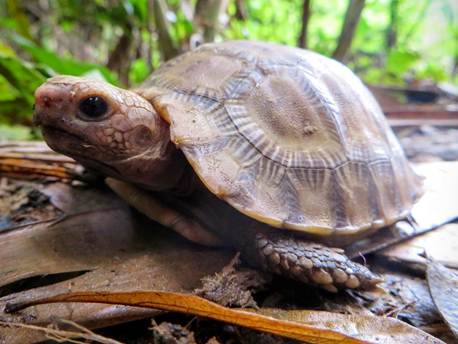
What Happened: Key Highlights
- Location: Zeliang Community Reserve, Peren district, Nagaland
- Event: Release of 10 individuals of Asian giant tortoise
- Source: Bred and raised in Nagaland Zoological Park, Chümoukedima
- Date of Reintroduction: August 2025 (community-led event)
- Partners Involved:
- Nagaland Forest Department
- India Turtle Conservation Programme (ITCP)
- Local Zeliang community
Scientific & Ecological Aspects
- Soft-Release Strategy:
- Tortoises were placed in a pre-constructed enclosure within the reserve
- Aim: Encourage site fidelity (the tendency to remain or return to the same site)
- Reduces post-release mortality and improves habitat acclimatization
- Habitat Restoration:
- Involves protecting forest undergrowth and controlling human intrusion
- Ensures microhabitats (leaf litter, moist soil) crucial for the species’ survival
Background: Decline in Nagaland
- Once found widely across Nagaland, especially in community forests
- Over last 10–15 years, populations collapsed due to:
- Illegal hunting for meat (considered a delicacy)
- Habitat degradation (logging, land-use change)
- Lack of awareness about its ecological importance
Role of Local Communities
- Community-Led Conservation:
- Zeliang tribe and local forest users involved in surveillance and protection
- Building community pride through cultural-symbolic value of the species
- Nagaland’s Model:
- ~90% forest is community-owned → Community reserves critical to conservation success
- Examples: Sendenyu, Khonoma, and Fakim wildlife models
Institutional Support & National Significance
- India Turtle Conservation Programme (ITCP):
- Collaborative initiative by Turtle Survival Alliance (TSA) & Wildlife Conservation Society (WCS)-India
- Supports breeding, release, and habitat protection
- Forest Department of Nagaland:
- Active in mobilizing locals, policy backing for soft-release, long-term monitoring
- Zoological Parks as Ex-situ Breeding Grounds:
- Nagaland Zoo plays pivotal role in captive breeding & reintroduction
- Aligns with India’s National Wildlife Action Plan (2017–2031)
Broader Conservation Relevance
- Aligns with SDGs:
- SDG 15 (Life on Land): Protect, restore, and promote sustainable use of terrestrial ecosystems
- SDG 13 (Climate Action): Forest conservation as a climate buffer
- Restoring Keystone Species:
- Herbivorous tortoises regulate forest floor ecology, seed dispersal
- Promote ecological balance in Eastern Himalayan biodiversity hotspot
- Precedent for Rewilding:
- One of India’s first structured soft-releases for a critically endangered tortoise
- Builds replicable model for Indian Star Tortoise, Black Softshell Turtle, etc.
Way Forward
- Long-Term Monitoring:
- Radio-tagging and periodic health assessments needed
- Community Incentives:
- Eco-tourism, forest-based livelihoods can ensure sustained local engagement
- Legal Support:
- Enforcing Wildlife Protection Act, 1972 in community-owned forests
- Scaling the Model:
- Replicate in Arunachal, Assam, Mizoram where habitats still exist
- Education & Awareness:
- Integrate with tribal schools and youth groups to reduce future poaching risk
Old trees, ageing farmers worsen outlook for palm oil exporters
Context and Background
- Primary Issue: Ageing palm oil trees, especially in smallholder plantations, are lowering yields, and replanting delays risk a significant supply crisis.
- Geographic Focus: Malaysia and Indonesia – account for 85% of global palm oil exports.
- Trigger: Farmers like Suratmen Mosman (Malaysia) reluctant to replant due to income gap during 3–5 year gestation of new palms and insufficient subsidies.
Relevance : GS 3(Agriculture)
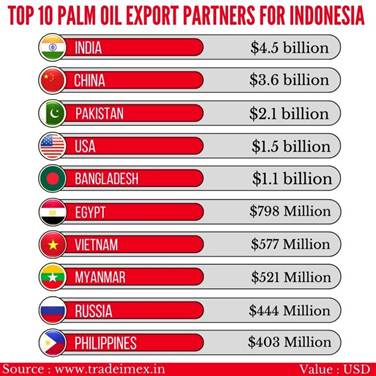
Supply Crisis – Causes and Dimensions
1. Ageing Trees and Declining Productivity
- Trees older than 20 years are past peak productivity.
- More than half of Malaysian smallholder plantations now exceed this age – much higher than official estimate (only 37%).
- In Indonesia, only 10% of the 2.5 million ha replanting target by 2025 has been met (as of Oct 2024).
2. Replanting Crisis
- Smallholders (40% of total plantations) lack financial capacity to replant.
- Subsidies have fallen, and there is no incentive to sacrifice income for 3–5 years during replanting.
3. Diversion to Biodiesel
- Indonesia is pushing higher biodiesel blending mandates (B30, B40), diverting palm oil to domestic energy use.
- Reduces exportable surplus and tightens global availability.
4. Data Underestimation
- Government data likely underestimates the extent of the ageing crisis.
- Field-level assessments by veterans (Dorab Mistry, M.R. Chandran) suggest real situation is worse.
Impact on Global Palm Oil Supply Chain
- Estimated Decline: Combined exports from Indonesia and Malaysia could drop by up to 20% by 2030 over 2024 levels.
- Price Impact: Likely to raise global vegetable oil prices, affecting billions of consumers.
- Volatility: Markets may have priced in slowdown, but deep structural underestimates may cause unexpected supply shocks.
India-Specific Relevance
1. India is the World’s Largest Palm Oil Importer
- India imports ~8–9 million tonnes/year, mostly from Indonesia (60%) and Malaysia (30%).
- Palm oil is essential for cooking oil, processed foods, cosmetics, and soaps in India.
2. Inflationary Pressures
- Any supply disruption → edible oil price inflation, impacting Indian households.
- Has direct bearing on WPI/CPI inflation, especially for food.
3. Push for Domestic Palm Oil
- India launched NMEO-OP (National Mission on Edible Oils – Oil Palm) in 2021:
- ₹11,040 crore scheme to boost domestic cultivation.
- Target: 1 million ha under palm oil by 2026.
- But progress is slow due to:
- Land suitability concerns,
- Ecological worries (especially in NE India and Andaman),
- Farmer reluctance due to long gestation.
Geopolitical and Environmental Dimensions
1. Geoeconomic Fragility
- Overdependence on 2 countries for a vital global commodity creates systemic risks.
- Mirrors OPEC-like concentration but in edible oils.
2. Sustainability and Deforestation Concerns
- Aggressive palm cultivation is linked to:
- Tropical deforestation
- Loss of orangutan and tiger habitats
- Carbon emissions from peatland clearance
- Balancing replanting with no new deforestation is a key sustainability demand.
3. Smallholder Livelihood Crisis
- Millions of farmers across SEA are trapped between rising costs, falling yields, and no support for transition.
- Without targeted intervention, smallholders may abandon plantations or resort to unsustainable practices.
Critical Insights and Policy Imperatives
- This is a structural, not cyclical crisis – ageing trees, not just weather shocks.
- Underinvestment in replanting poses long-term supply risk.
- India must de-risk from palm oil concentration through:
- Diversifying edible oil sources (e.g., soy, sunflower from Argentina, Ukraine)
- Scaling up oilseed missions domestically (mustard, groundnut, safflower)
- India’s foreign policy must include strategic agri-commodity diplomacy with Indonesia-Malaysia.
Conclusion
The palm oil sector stands at a tipping point. Unless smallholders are supported to replant, and demand is better managed, the world could face a structural supply crunch in the next 5 years. For India, it’s a call to diversify sources, scale up domestic production, and shield consumers from edible oil shocks.
Attempt to Save Rhinos by Giving Them Radioactive Horns
Context: Rhisotope Project (South Africa)
- What? A novel anti-poaching initiative using radioactive isotopes injected into rhino horns.
- Where? Waterberg Biosphere Reserve, South Africa.
- Who? Led by the University of the Witwatersrand, supported by the IAEA (International Atomic Energy Agency).
Relevance: GS 3(Environment and Ecology)
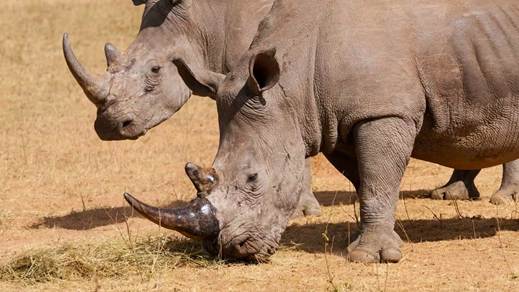
Objective and Purpose
- Curb Illegal Wildlife Trade: By making horns detectable, useless for poachers, and dangerous for illicit trade.
- Avoid Animal Harm: Procedure aims to retain the horn (unlike dehorning) while not harming the rhino.
- Leverage Nuclear Security Tools: Uses existing Radiation Portal Monitors (RPMs) at borders, ports, and airports to detect the isotope-tagged horns.
How the Technology Works: Radioisotope Tagging
- Non-Invasive Technique: Low-dose radioactive isotopes are injected without surgery or structural changes.
- Mechanism:
- Isotopes emit low radiation, absorbed by keratin (horn material).
- This makes horns easily detectable using RPMs, even in containers.
- Mimics illegal nuclear material transport — already tracked globally.
- Safety Verified:
- Trials on 20 rhinos in June 2025.
- Cytological (cell-level) tests by Ghent University, Belgium.
- Compared 15 treated and 5 untreated rhinos — no biological damage found.
- Horn Becomes “Poisonous” to humans due to radioactive properties – deterrence through health risk.
Project Details
- Name: Rhisotope Project
- Cost: ~$290,000
- Timeframe: 6 years of development and testing
- International Collaboration: IAEA, Ghent University (Belgium), etc.
Significance for Global Conservation
- Poaching Crisis:
- 500,000 rhinos at start of 20th century → ~27,000 today.
- Poaching driven by demand for rhino horn (traditional medicine, status symbol).
- Current Strategy Limitations:
- Dehorning: Stressful and invasive.
- Militarized anti-poaching units: Expensive and confrontational.
- Demand-side regulation: Slow and ineffective in the short term.
- Radioisotope Approach:
- Non-lethal deterrence for humans.
- No harm to rhinos.
- Uses existing international security infrastructure (nuclear material tracking).
India-Specific Relevance & Ethical Dimensions
Conservation Lessons for India
- India faces similar threats (e.g., tigers, elephants, pangolins).
- Kaziranga and Manas National Parks have suffered rhino poaching.
- Rhisotope-like strategies could complement:
- Project Tiger / Project Elephant / Project Rhino
- CITES enforcement, NTCA monitoring systems
Ethical & Legal Considerations
- Is it ethical to use radioactive substances on animals?
- Supporters argue: If proven safe, it saves lives without harm.
- May require revision of domestic laws to allow such radioactive use on wildlife.
- Needs public acceptance, scientific transparency, and regulatory oversight.
International Cooperation & Technology Transfer
- Project shows successful model of science diplomacy in conservation.
- India could:
- Collaborate with South Africa for technical know-how.
- Propose similar tools for pangolin scale tracking (next big illegal wildlife trade).
- Seek IAEA, UNEP partnerships under South-South cooperation.
Critical Insights & Policy Implications
- Technological innovation is emerging as a critical conservation tool.
- Nuclear tech repurposed for peacetime wildlife protection – new frontier.
- Emphasizes deterrence through traceability, not just physical barriers.
- Demonstrates the importance of interdisciplinary solutions — blending wildlife science, nuclear physics, ethics, and law.
Conclusion
The Rhisotope Project represents a groundbreaking shift in anti-poaching strategies — one that is non-violent, tech-driven, and globally integrated. While not a silver bullet, its ability to act as a deterrent with minimal animal harm makes it a compelling model for India and other biodiversity-rich nations facing similar threats.
